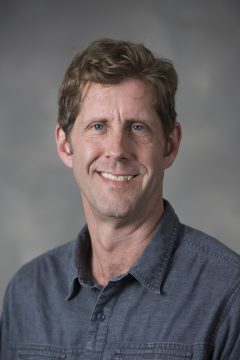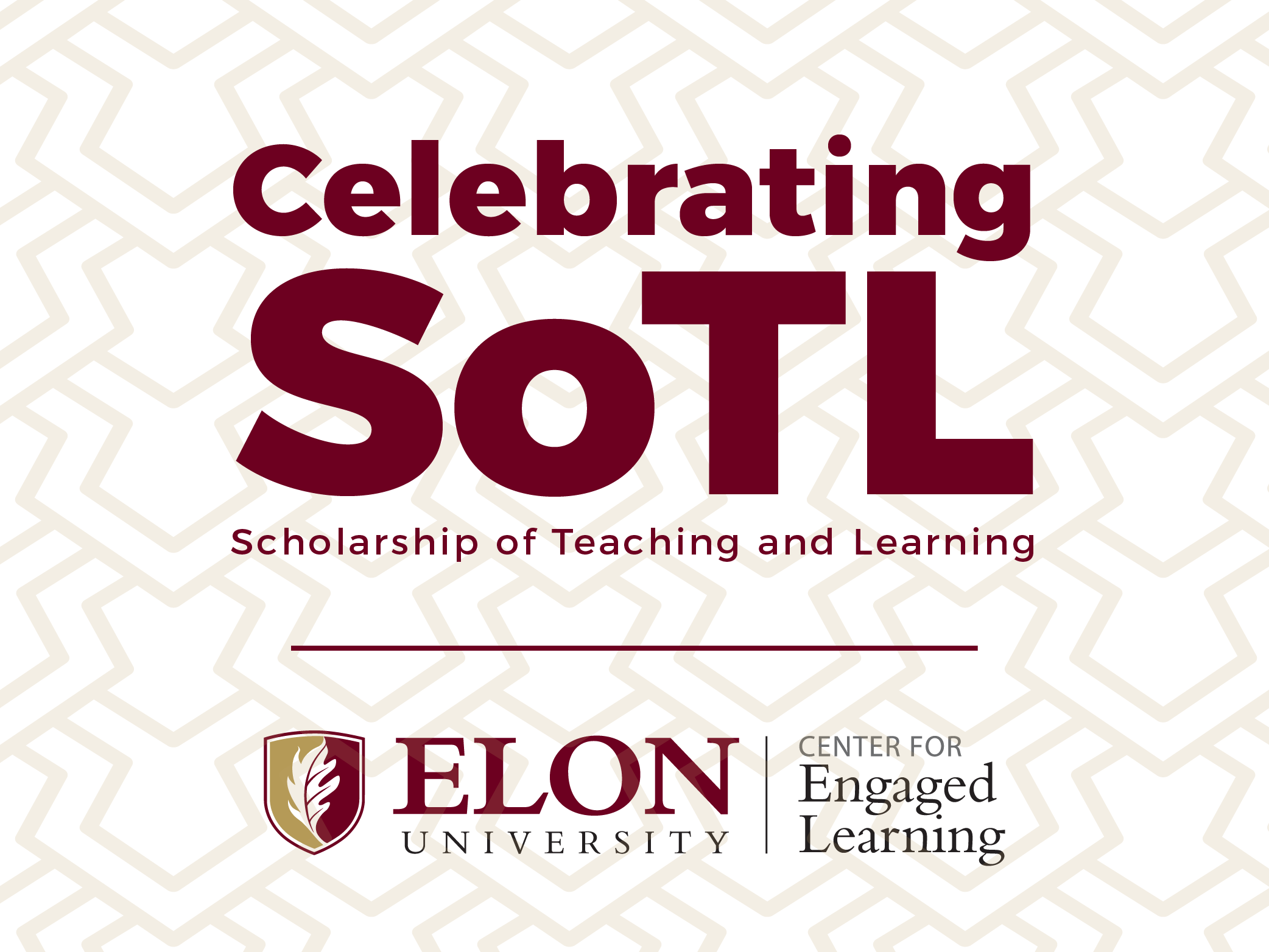Associate Professor of Communication Design Phillip Motley is studying what defines “immersive learning” practices. What characteristics make these pedagogies immersive and why are they beneficial?
Each spring, the Center for Engaged Learning (CEL), the Center for the Advancement of Teaching and Learning (CATL), and the Center for Research on Global Engagement (CRGE) join together to showcase research projects focused on the Scholarship of Teaching and Learning (SoTL). Due to COVID-19, we have shifted from our usual poster presentation session to an online version through a series of Today at Elon stories. Follow along each day as we share Elon scholars’ research on innovative teaching practices.

If you think about a pivotal moment in your education, you probably don’t remember reading a textbook or listening to a lecture. Often the educational experiences that have the most impact are those that take you out of the classroom in some way or involve you in an extended, in-depth project on a topic you care about.
Associate Professor of Communication Design Phillip Motley is studying what defines these “immersive learning” practices — what characteristics make these pedagogies immersive and why are they beneficial?
Motley is working with the Center for Engaged Learning as their 2019-21 CEL Scholar, and during his two-year term he is asking questions about what pedagogies are immersive, what are the defining characteristics of immersive learning, what are the benefits and affordances of these pedagogies, and what support do instructors need to do them well. He’s working with six collaborators in the U.S., Canada and Australia to interview faculty members and instructors to get their perspectives on immersive learning.
Based on these interviews and an in-depth literature search, Motley has come up with a working list of the defining characteristics of immersive learning: degree of focus, time on task, situated learning, amount of agency and autonomy, and continuity of learning (read more about these characteristics in this blog post by Motley).
There are many types of educational experiences that have the potential to be immersive: study abroad, service learning, internships, work-integrated learning, winter terms or other types of block schedules, and mentored research projects, among others. Some types of immersive learning are specific to various disciplines, for example clinical rotations for medical students. Many high impact practices have strong immersive qualities.
Motley argues that immersive learning provides students a rare opportunity (in their very busy lives) to focus deeply on one thing, to engage authentically with real-world problems, to care about something beyond their own lives as students. Motley has taught many service-learning courses and says, “interesting things happen when you get students far enough away from the classroom and the campus that they start to act less like students. Grades become more of a background concern when they’re engaging in something real. The drive is now to do well for the partner, rather than for the self.”
While many immersive learning experiences take students out of the classroom, they don’t have to — this has been one of the surprises of Motley’s research. Through faculty interviews, he learned about several innovative teaching practices that immerse learners within the classroom.
One example was provided by Elon Professor of Spanish Nina Namaste, who asks students in a gender studies course to suspend their disbelief and imagine (for the entire semester) that the class isn’t part of the hegemonic patriarchy; classroom structures allow students to practice differently distributed power systems. Another interviewee told of a simulated medical training in which students worked with such lifelike dummies that they can get seriously upset when the poor dummy doesn’t make it. Both of these examples show that immersive learning can be a state of mind, a mental journey for the student rather than a physical one.
Motley has been doing SoTL and higher education research for many years. “SoTL has been the most fun when it’s been collaborative,” he says. “So even though I never thought I would have six collaborators around the world, it’s a lot of fun doing it with them and getting their perspectives.”
His collaborators on this project include: Beth Archer-Kuhn, University of Calgary; Catharine Dishke, Thompson Rivers University; Jennifer Dobbs-Oates, Purdue University; Michelle Eady, University of Wollongong; Janel Seeley, University of Wyoming; and Rosemary Tyrrell, University of California-Riverside.
He loves that his SoTL research allows him to supplement his disciplinary research with something new and different, allowing him to explore his curiosity about how students learn best and to meet researchers from all different disciplines. “I’m a person that needs variety, and SoTL scratches that itch,” he says.
Motley also appreciates that the CEL Scholar position has enabled him to tackle a larger SoTL project, a project that has at times felt like a “wild goose chase or detective work.” It’s given him the time and support he needs to ask broad questions and investigate new ideas as they come along.
During a two-year appointment, CEL Scholars develop expertise in a specific aspect of engaged learning and create resources on that topic to be shared through CEL’s web site and in other scholarly venues. The CEL Scholar position is an opportunity for an Elon faculty member to develop and deepen a professional development trajectory that includes scholarly activity on a high-impact practice or other engaged learning topic. Learn more about the CEL Scholars program.



